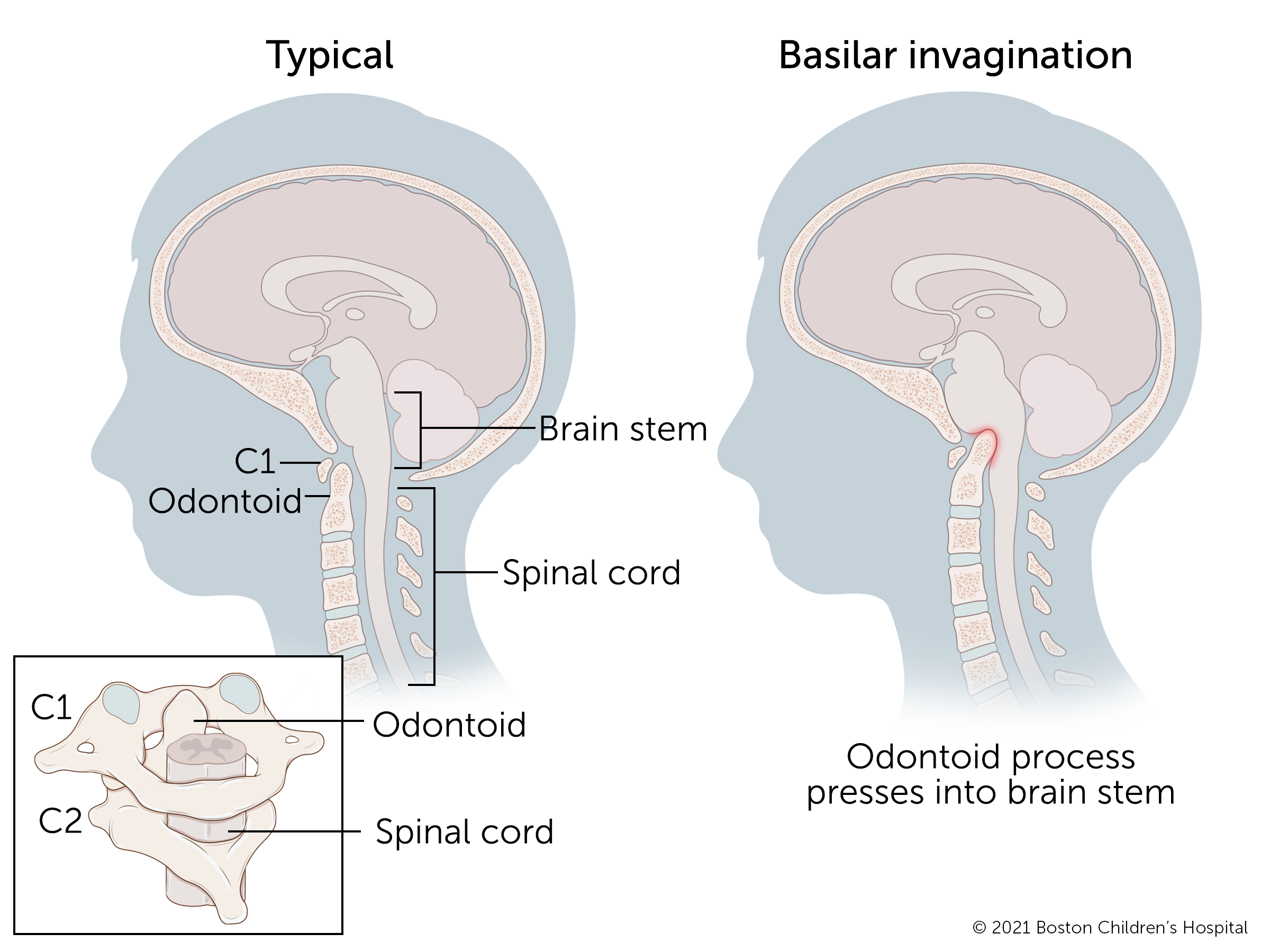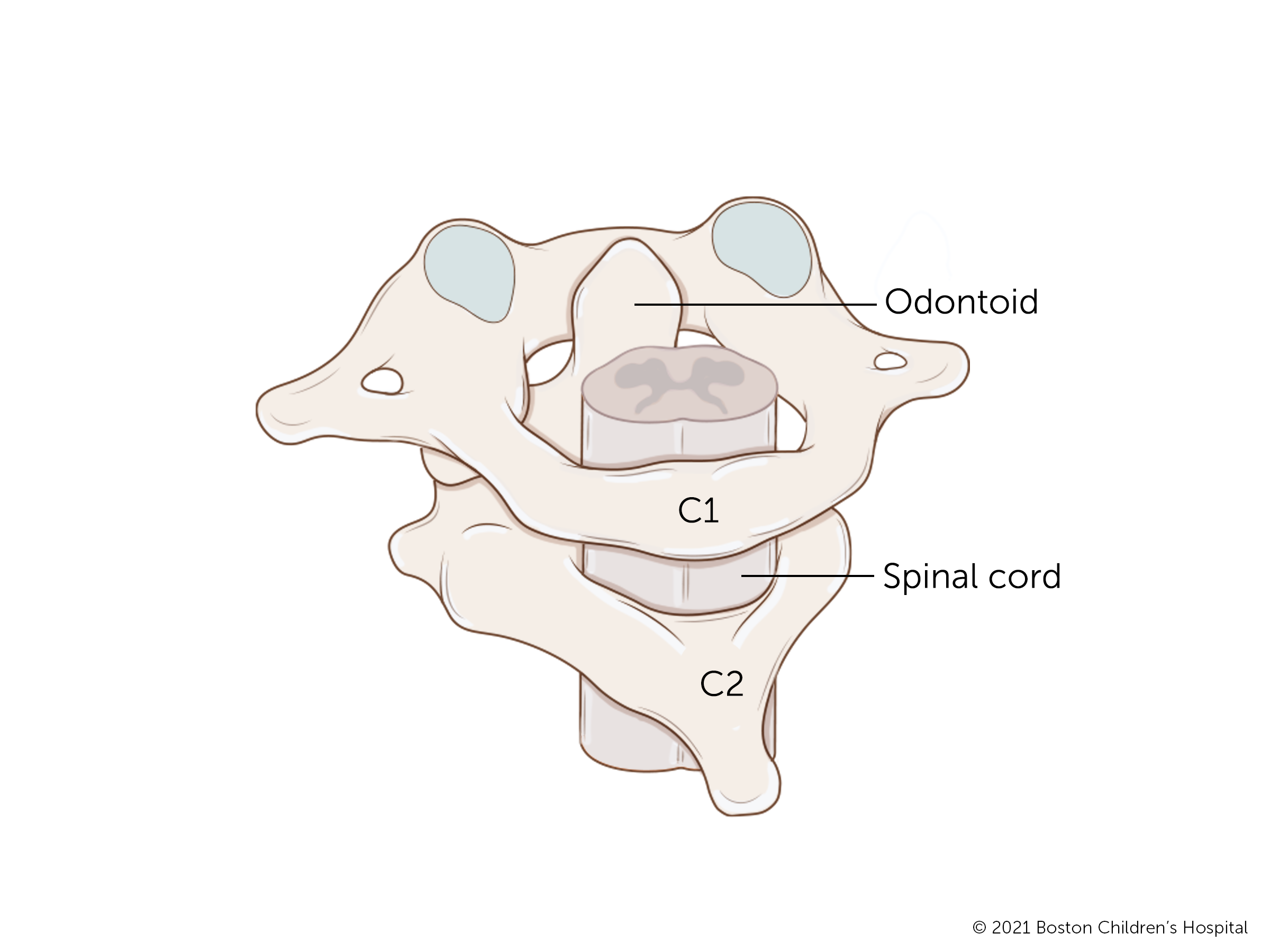Basilar Invagination | Symptoms & Causes
What are the symptoms of basilar invagination?
Symptoms of basilar invagination depend on what part of the brain stem is pinched and to what degree. Many symptoms may flare up when your child bends forward at the neck.
Symptoms may include:
- headaches
- neck weakness
- numbness or tingling in the fingers, arms, toes, or legs
- dizziness/light headedness
- trouble swallowing or talking
- loss of body sense (knowing where body parts are without looking)
- back pain or shock when bending forward at the neck
- paralysis in the arms or legs
What causes basilar invagination?
Some children are born with basilar invagination for no known reason. Often, children born with basilar invagination also have Chiari malformation, an abnormality at the base of the skull that pushes some of the brain tissue into the spinal column.
Other genetic conditions such as osteogenesis (fragile bones that break easily) or Marfan syndrome (weak connective tissues) can increase a child’s risk of developing basilar invagination.
Children who were born with irregularities of their cervical spine may also have basilar invagination. In some children, basilar invagination may occur without a clear cause.
Basilar Invagination | Diagnosis & Treatments
How is basilar invagination diagnosed?
Basilar invagination is typically diagnosed and treated by a specialist in spine care, neurology, or neurosurgery. The goal of diagnosis is to determine if the C2 vertebra is out of alignment and, if so, how much.
Typically, diagnosis starts with a physical exam to check your child’s muscles and nerves. The doctor may order one or more of the following imaging tests:
- x-ray to look at the bones
- magnetic resonance imaging (MRI) to look at soft tissues
- computed tomography (CT) scan to see detailed images of bones and soft tissues
How is basilar invagination treated?
Treatment for basilar invagination depends on the severity of the condition.
Non-surgical treatment for basilar invagination
Children with mild basilar invagination can often be treated with physical therapy, anti-inflammatory medication, or a neck brace. However, basilar invagination may become more severe as children grow. Therefore, children with a mild form of the condition need to be followed by a spine specialist over time. The specialist will monitor their symptoms and watch for any changes in the alignment of their spine.
Surgical treatment for basilar invagination
Children with severe basilar invagination will probably need surgery to relieve pressure on their brain stem and stabilize their cervical spine. Because surgery involves a child’s spine, brain, and spinal cord, it’s important that the surgical team includes experts in both orthopedic surgery and neurosurgery.
Surgical treatment for basilar invagination involves realigning the spine and decompressing any pressure against the brain stem. The cervical spine will then be stabilized with spinal fusion.
How we care for basilar invagination at Boston Children’s Hospital
The Complex Cervical Spine Program at Boston Children’s Hospital is the first and only multidisciplinary pediatric cervical spine clinic in the United States. Our team includes specialists in neurology, neurosurgery, and orthopedic surgery who are experienced in correcting rare and complicated cervical spine disorders like basilar invagination. The extensive expertise and resources at Boston Children’s enable us to treat the most complex cases and perform the most delicate surgeries so our patients can lead full, independent lives.




